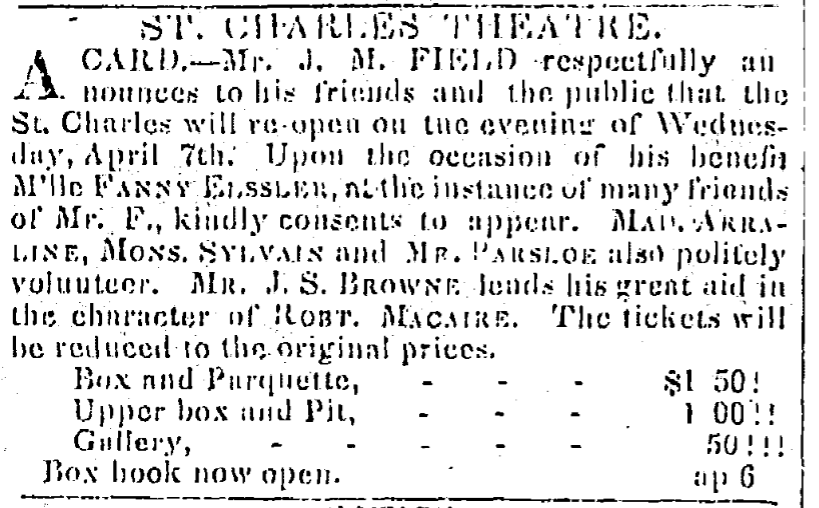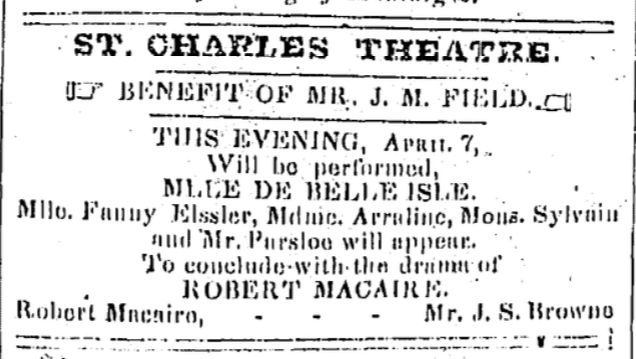Every day, people make a series of decisions about how the day’s hours are spent. Taking up time can come through an occupation, a hobby, or just spending time with friends and family. As the world develops and the internet takes up more of the world around us, people feel the need to be doing something at all times. Keeping busy often comes in the form of entertainment, whether that be television, movies, sports, theatre, speeches, etc. Theatre is one of the oldest forms of entertainment with origins in the 6th century BC in Ancient Greece as a religious ceremony for Dionysus, the god of fertility and wine. Religion played a central role in theatre’s content for centuries as Priests put on Mystery Plays in the 12th century to have aspects of religion outside of church itself. During the Renaissance, as Europe adopted a humanistic approach away from a religious core, theatre’s content became more entertainment-based through opera, comedy, and other entertainment genres. In London, as theatre became more entertainment-based, physical grand playhouses were constructed as opposed to the smaller courtyards used before, where Shakespeare’s plays were shown in. In New Orleans in 1841, the St. Charles Theatre was the grandest place to see primarily British theatre. This theatre represents peoples’ need to be entertained because of the excitement surrounding it and people taking the time and money to go witness it.
This theatre represented an obsession with opulence and grandeur. The St. Charles Theatre opened in 1835 under the leadership of James Caldwell, a British man who established the practice of English-speaking drama in the city. It was characterized by its grandeur and ornate decorations that cost $300 thousand in 1841, approximately $9.13 million in 2021, including a two ton, twelve foot high chandelier. People are attracted to shiny things, which many may think is because of its association with wealth. However, this is an innate attraction to bright and shiny objects because of an evolutionary association with the need for water.
New Orleans saw increased immigration in the 1830s and 1840s, primarily from Ireland and Germany. As more people arrived in the city, there were more people that needed to be entertained. Caldwell saw this association when he left the Camp Street Theatre because of its inadequate size to sustain New Orleans’s increasing population. Caldwell was determined to maintain the authenticity of British theatre at the St. Charles Theatre, and many of the shows that ran there ran simultaneously with the shows in London’s theatres, bringing the newest shows in England to New Orleans. Caldwell capitalized on the desire for both grandness and newness when designing this ornate theatre. Because it was so large and beautiful, it became a new sight for people to see. The St. Charles was the pinnacle of high society and class in New Orleans’s entertainment industry in 1841. Theatre remains a popular form of entertainment and culture, but it has a dark issue behind the curtain. Tickets can be quite expensive, making theatre not accessible to all socioeconomic levels, which in turn, makes it not accessible for marginalized groups. Entertainment is something that people need, but it is not always something that people can have. However, the St. Charles itself was not wildly expensive by today’s standards, with the highest priced tickets for a benefit coming out to just $1.50, or $45 in 2021 dollars. For reference, doing essential business by putting goods on a steamboat ranged from $3 to $8.

Description and pricing for an event at the St. Charles Theatre
The newest shows from England’s theatre scene played at the St. Charles, creating one of its strongest selling points since people are inherently attracted to new things. Neurologically, there is a novelty center of the brain called the substantia nigra/ventral segmental area (SN/VTA). Researchers Nico Bunzeck and Emrah Düzel tested peoples’ reactions to newness and found that the SN/VTA was activated by novel images and dopamine is released when exposed to novelty. This idea can be applied to the new shows that ran at the St. Charles. When Dion Boucicault’s London Assurance opened in London in 1841, it also opened at the St. Charles in New Orleans, where actress Fanny Davenport started her career. Dancers like Fanny Elssler brought in crowds by the thousands for a night of culture and entertainment. Part of the appeal of the St. Charles was its connection to British theatre. Americans have long had an enchantment with Europe as those who founded the United States, including New Orleans, had European roots. From wanting to honor one’s roots or explore cultures, Americans love Europe. Most of the theatres in New Orleans had a European focus at the time with Theatre d’Orleans focusing on French theatre and Italian opera playing at both theatres. When people in New Orleans wanted to watch theatre, they wanted to see European themes and shows. Not everyone who wants to visit Europe may have the financial or scheduling means to do so. Travelling to Europe in 1841 was not as easy of a task before popularized international air travel. If someone in New Orleans wanted to go to Europe, they would have to take a six to fourteen week boat voyage in subpar conditions. If people wanted to experience British culture in the states, the St. Charles was the way to do so.
While 1841 saw success and activity at the St. Charles, doom was impending when it burned down in 1842. The story of this beloved theatre does not end in 1842 because it was rebuilt less than a year later, albeit with less extravagant decor. People spend time and money on things that they find valuable. After the St. Charles burned down, the people of New Orleans could have settled with the theatre options remaining. However, people want options in life, as Susan Weinschenk, Ph.D. explains, in order to feel more control in their lives. The value of entertainment empowered people in New Orleans to put in the time, money, and effort into the theatre to have it return in a year, demonstrating people control of wanting more entertainment options in the city because it was something they valued.
Stories about shows at New Orleans’s theatres were covered in The Daily Picayune along with ads for events going on throughout the city, local and national news, and reports on imports and exports. In addition to news and advertisements, there were also short stories and poems throughout the paper, providing an easily accessible form of entertainment included in the price of the daily report. For those that did not or could not attend the shows at theatres like the St. Charles Theatre, The Daily Picayune provided a source for entertainment that was the next best thing. The Daily Picayune sold for around one to four cents an issue, and people could subscribe for 12 dollars a year. People could read about these shows as well as the theatre’s opulence and the large crowds it attracted. When people read these stories, they wanted to see these shows themselves and be a part of this community in society.
The entertainment industry fills a need for people’s desire to be busy and have something to entertain them. Many would agree that people have a need to be entertained, but the question remains: why do we need to be entertained? Psychologist Melanie Green explains that people are so attracted to works of fiction because they feel as if they are a part of the story in something called “narrative transport”. Fictional possibilities are often easier to deal with than reality, so preferred forms of entertainment and genres provide an outlet of escapism. Timothy Brock and Stephen Livingston’s The Psychology of Entertainment Media: Blurring the Lines Between Entertainment and Persuasion explores what the normal distribution curve of our need for entertainment looks like. They mainly studied television, but they found an inverse relationship between the need to be entertained and the need for cognition. Their findings insinuate the more television people watch, the less they are thinking critically. Their research further proves that people want and need to be entertained as a form of escapism from the problems faced on a daily basis. When theatregoers went to see shows at the St. Charles, they did not have to worry about yellow fever, the lack of sewage, or the constant threat of war. These shows allowed them to escape into a new reality where society’s problems do not exist for a brief period of time.

Advertisement for a benefit for J. M. Field at the St. Charles Theatre
World renowned ballerina Fanny Elssler performed at the St. Charles Theatre in March 1841, bringing a famous European artist to New Orleans. As the audience sat down, looking around at the opulent chandelier and decorations the Theatre was known for, they did not have to worry about disease, military threats, or crime on Gallatin Street. They could just have a seat in Caldwell’s theatre, see the lights dim, and watch Elssler “[glide] into attitudes the most classical with an ease which astonished as well as delights” that represented “a spirit of the air.” The St. Charles Theatre was the place to be for theatre in New Orleans in 1841, bringing entertainment for a population with a need to be entertained.
 NOLAbeings
Multimedia artist Claire Bangser created NOLAbeings as a portrait-based story project that marries...
NOLAbeings
Multimedia artist Claire Bangser created NOLAbeings as a portrait-based story project that marries...
 Data corner: Adobe Suite (create a PDF, social media graphic, presentation, edit a photo and video
Data corner is where you go to work with analytics and top tech skills. It takes on everything from PERL and SQL to Canva and Sprout Social.
Data corner: Adobe Suite (create a PDF, social media graphic, presentation, edit a photo and video
Data corner is where you go to work with analytics and top tech skills. It takes on everything from PERL and SQL to Canva and Sprout Social.

Thank you for the news and quick answer. I’m going to keep an eye on this post. Trying to find the same problem. I ran into your thread. Thank you for making it. Looking forward to the answer. Mykohlscard.com
It’s so fascinating how the human need for entertainment has evolved, from ancient Greek rituals to grand 1841 theatres! It really highlights how we’re always seeking ways to spend our time, even today. Sometimes, for a quick bit of self-amusement, I’ll even take an online personality test.
This 1841 New Orleans: Are You Entertained? People’s Need for Entertainment and the St. Charles Theatre is a nice detail that people want to know to use for learning. While using Toorak Gardens I got the best solutions that make it perfect for us to deal with.
This is so fascinating! It’s wild to think about how much people craved entertainment even back in 1841. Today, we have so many options, like diving into a game of BLOOD MONEY when we want to unwind. Shows how that need for distraction never changes!
Absolutely, you define who you are. Everyone’s journey is unique, and your identity is solely yours to shape. If there’s something specific you’d like to talk about or explore, I’m here to support you in any way I can. milestone credit card login
That is a really helpful bit of material. I appreciate you just giving us this useful knowledge. Please keep us advised in this way. I appreciate your contribution. thorn and balloons
There are numerous well-known video games today, but you might not be familiar with this one. Spend some time playing it to see how fantastic it is! run 3
A fascinating look at how entertainment—especially theatre—has long been a vital escape and cultural anchor. The St. Charles wasn’t just a venue, it was a sanctuary from reality. football
Readers are encouraged to express themselves through painting, whether it’s abstract art or scenic landscapes.
hs gpa